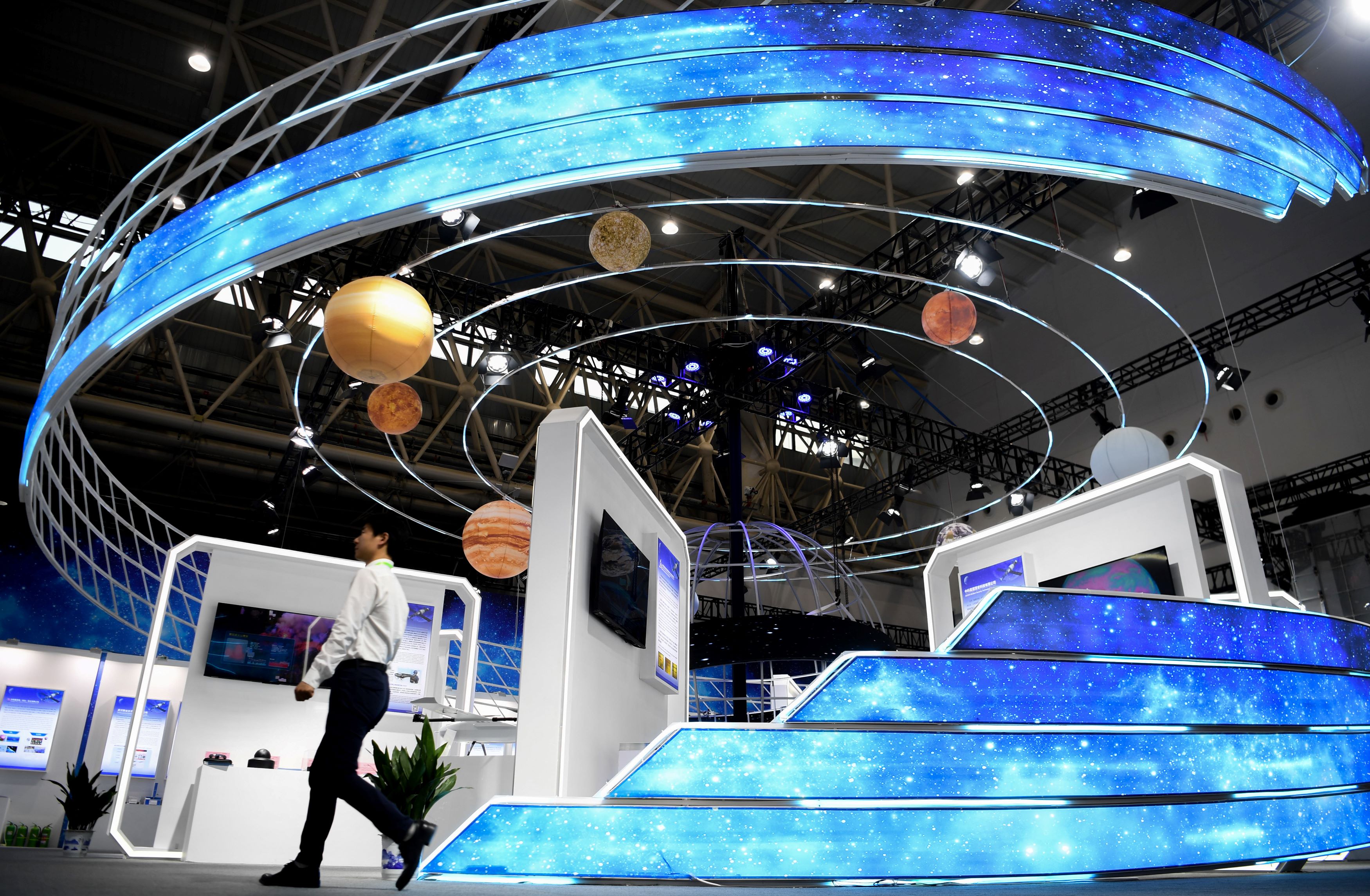
WUHAN/BEIJING - More partners will participate in the construction and operation of the International Lunar Research Station (ILRS), the China National Space Administration (CNSA) announced on Wednesday.
The latest progress on the ILRS program, which was initiated by China, was revealed at the launch ceremony of the Space Day of China in Wuhan, central China's Hubei province.
The new partners of the ILRS are Nicaragua, the Asia-Pacific Space Cooperation Organization and the Arab Union for Astronomy and Space Sciences.
China will collaborate with these three parties on various issues concerning the ILRS, including its demonstration, engineering implementation, operation and application, according to the CNSA.
The CNSA also announced that China's Chang'e-7 lunar exploration mission will carry six scientific instruments developed by six countries and one international organization
The officials at the CNSA have signed agreements and memorandums of understanding on the cooperation on the ILRS with relevant officials from the three sides.
READ MORE: Xi greets forum on space cooperation with LatAm, Caribbean countries
The building of the International Lunar Research Station will be carried out in three phases, with a basic model of the station expected to be completed by around 2030.
According to the CNSA, the research station will operate autonomously for a long period of time, with short-term human participation.
The CNSA also announced that China's Chang'e-7 lunar exploration mission will carry six scientific instruments developed by six countries and one international organization.
The Chang'e-7 mission, scheduled for launch around 2026, aims to survey the lunar surface environment, water, ice and volatile elements of lunar soil in the lunar south pole. It will also carry out research on the lunar terrain, composition and structure, the CNSA said.
ALSO READ: Chang'e 6 to carry foreign science payloads
The countries and the international organizations participating in the development of the scientific instruments are Egypt, Bahrain, Italy, Russia, Switzerland, Thailand and the International Lunar Observatory Association.
A moon-based, two channel spectrometer for Earth radiation measurement developed through cooperation between Swiss and Chinese scientists will be installed on the orbiter to monitor the radiation incoming to and outgoing from the Earth's climate system
The Chang'e-7 lander will carry laser retroreflector arrays developed by Italy to provide high-precision measurement on the lunar surface and navigation services of the orbiter.
A lunar dust and electric field instrument developed by Russia will be aboard the lander to detect the dusty plasma environment of the lunar surface.
A lunar-based telescope developed by the International Lunar Observatory Association will also be installed on the lander so that observations on the Galaxy, the Earth and the full sky can be made.
The orbiter will carry a lunar hyperspectral camera developed by Egypt and Bahrain to identify the lunar surface material and the lunar environment.
READ MORE: China, Thailand to cooperate in lunar exploration missions
A moon-based, two channel spectrometer for Earth radiation measurement developed through cooperation between Swiss and Chinese scientists will be installed on the orbiter to monitor --for the first time from a lunar perspective -- the radiation incoming to and outgoing from the Earth's climate system.
The orbiter will also be equipped with a sensor package for space weather global monitoring to provide alerts and warnings of magnetic disturbances and radiation due to solar storm.
Starting in 2016, China chose April 24 as the Space Day of China to mark the launch of its first satellite "Dongfanghong-1" into space on April 24, 1970.
ALSO READ: Shenzhou XVIII crewed spaceship ready for launch
Meanwhile, the China Manned Space Agency (CMSA) on Wednesday said that China's lunar landing mission is being carried out smoothly, as its component systems are under research and development as planned.
The project development of major flight products, such as the Long March-10 carrier rocket, the manned spacecraft Mengzhou, the lunar lander Lanyue and the lunar landing suit, has been completed, and their prototype production and tests are being carried out, said Lin Xiqiang, deputy director of the CMSA.
ALSO READ: China to launch Shenzhou XVIII crewed spaceship on April 25
The development of mechanical and thermal test products for manned spacecraft and lander has been basically completed, various rocket engines are underground tests, and the Wenchang manned lunar exploration launch site is under construction, he said.
The proposals for manned lunar rover and lunar surface payloads solicited from the public are under selection, Lin added.
In 2023, China initiated the lunar landing mission of its manned lunar exploration program, aiming to realize manned lunar landing by 2030
The deputy director said, unlike the space station mission, the lunar landing mission needs astronauts to master the operation of the Mengzhou spacecraft and Lanyue lander under normal and emergency flight conditions, including rendezvous and docking of the spacecraft and lander, and manually avoiding obstacles during the lander's descent.
READ MORE: Chinese scientist wins this year's laureate prize
Other training requirements include spacecraft exit and entry on the lunar surface, walking with weights under one-sixth Earth gravity condition, long-range driving of the lunar rover, as well as drilling, sampling and scientific investigation on the lunar surface.
"Manned lunar exploration is a challenging, innovative and leading sci-tech program. We will proceed on the development and manufacturing in a coordinated way to achieve the mission objectives as scheduled," he added.
In 2023, China initiated the lunar landing mission of its manned lunar exploration program, aiming to realize manned lunar landing by 2030.


